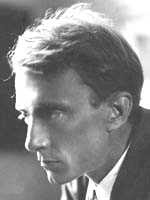
No doubt the fault lies with me, but I have never found a book about the English Civil War that has managed to hold my interest for very long . . . until now. Geoffrey Robertson's 2005 book, The Tyrannicide Brief, enables the reader to gain an understanding of the causes and complexities of those most turbulent of times. By telling the story of one man's personal and critical involvement in the trial of Charles I, Robertson has provided not only the detailed backdrop of the dramatic conflict between Parliament and King but also a disturbing insight into the darker aspects of human nature.
John Cooke was the lawyer who accepted the brief to prosecute Charles I at his trial in 1649. Cooke took on this huge responsibility when other men of his profession were literally hiding in their chambers in fear of the potential consequences of such an undertaking. Eleven years later, with Cromwell dead and and the members of the 'cause' left rudderless and badly divided, Charles II was put on the throne. England again became a monarchy, and John Cooke was to pay the ultimate price for his efforts. The new king ruthlessly and vindictively set about rounding up all those deemed responsible for the execution of his father. Those who were subsequently brought to their mock trials became known as The Regicides. Their fate was sealed, and the author rightly spares us none of the gruesome details of the manner of their deaths at the hands of the appointed executioner. If England thought it had stepped into a more enlightened age, the hanging, drawing and quartering of the Regicides reminded everyone that plumbing the depths of depravity is not peculiar to any given era.
Times and opinions may change, but much of what makes the world of politics what it is does not. In this book, which deals with events that took place three and a half centuries ago, we find examples of behaviour and attitudes that are common enough today: the lust for power and the abuse of power; dogmatic conviction and calamitous intransigence; machiavellian mendacity and downright brute force. Thanks to the likes of John Cooke, there is also a large chunk of decency and courage.





